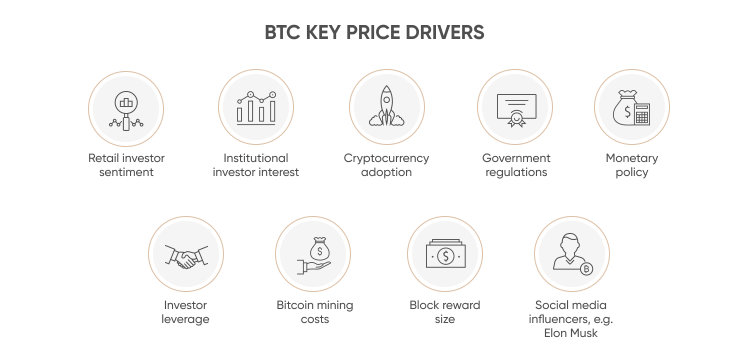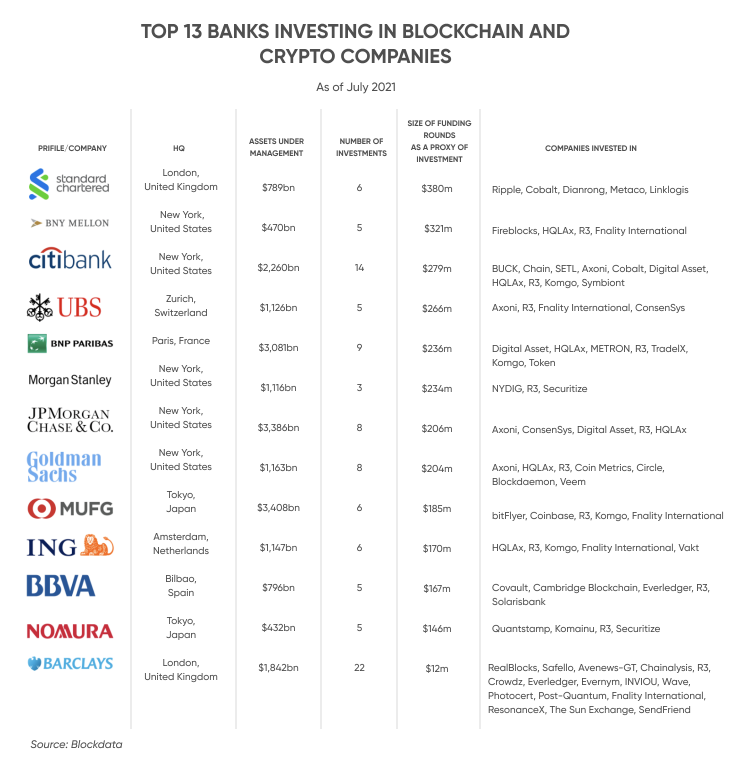Bitcoin price prediction 2025: will the coin reach $100,000?

It has been more than a decade since anonymous creator Satoshi Nakamoto mined the first bitcoin (BTC) block. Over the years, the world’s largest cryptocurrency by market capitalisation has experienced several boom-and-bust cycles as it establishes a place in the global financial system. The narrative surrounding the digital currency has evolved as well, from unregulated digital money and a peer-to-peer payment network to an inflation hedge and a store of value.
This year has seen the first country adopt BTC as legal tender. El Salvador introduced bitcoin as a national currency alongside the US dollar on 7 September.
Bitcoin initially captured retail investors’ imagination as a volatile asset with the potential for rapid, large returns. Institutional investors were initially sceptical, but some have now taken a different view.
As a Goldman Sachs report noted earlier this year, “bitcoin is now considered an investable asset.”
Many commentators and analysts expect the BTC price to go up. Let's briefly recap the most-cited bullish drivers before considering some price projections and potential pitfalls looking ahead to the middle of the decade.
Bitcoin emerges from deteriorating macroeconomic backdrop
Bitcoin was created, in part, in response to unlimited corporate bailouts during the global financial crisis. The cryptocurrency is designed to counter continuous money printing by central banks.
This has only increased in importance. In response to the Covid-19 pandemic, governments around the world have introduced a plethora of fiscal measures to support their economies, leading to massive deficits and rising inflation. Central banks have been tasked with financing these deficits by printing large amounts of money. Global monetary stimulus measures and near-zero interest rates are further contributing to the deterioration of the scarcity of fiat currencies.
In comparison, assets such as gold, silver and bitcoin are inherently scarce. The supply of bitcoin is growing around 2.5% per year but it’s deflationary, with rewards for miners verifying blocks and the blockchain halving every four years. Supply is capped at 21 million coins, of which 18.8 million are already in circulation, as of September 2021.
As the original cryptocurrency establishing its position as “digital gold”, bitcoin has the wide moat and powerful network crucial for the blockchain’s adoption and security. Despite many innovations in the crypto space, the Bitcoin blockchain remains the most secure, precisely because of the substantial network of devices worldwide verifying its accuracy.
Bitcoin's halving cycles tend to act as short- to medium-term price catalysts, as the reduction in new coin supply helps to push prices higher. The most recent halving in May 2020 supported the price rise, following price trends from the previous cycles. Historically, most gains occur in the 12 to 18 months following a halving.
As the BTC network grows and the asset classes mature, each halving cycle has less impact on the price.
Bitcoin key price drivers
The scarcity of BTC and the security of its network are fundamental pillars of the bitcoin bull case. Some of the other major price drivers include:

Institutional and corporate investment
Institutional money includes hedge funds, pension funds, family offices, high net worth individuals and corporate treasury departments.
Bitcoin remains a relatively small asset class. Liquidity is still insufficient for many institutional investors to meaningfully participate in the market. Global central banks, for example, held more than $1.65trn in gold reserves in Q2 2021 and would struggle to allocate any significant capital to BTC.
But hedge funds and investment banks are increasing their exposure to bitcoin.
In March 2021, Morgan Stanley became the first large US investment institution to start offering its global clients access to bitcoin funds.
The biggest global investment banks are also investing millions of dollars in the funding rounds of various blockchain projects, including Standard Chartered, BNY Mellon, Citigroup, UBS Group and BNP Paribas. Of the 100 largest banks based on assets under management, 55 have invested in cryptocurrencies or blockchain developers, according to stats compiled by Blockdata.
And a new class of investment products is targeting the cryptocurrency space. Digital currency investing company Grayscale launched its Bitcoin Trust in 2013 and now has more than $27.7bn in assets under management (AUM).
#tbt: Grayscale launched in 2013 with Grayscale Bitcoin Trust - an investment designed to give investors a secure, familiar way to get exposure to $BTC. https://t.co/DewwG9R0qS
— Grayscale (@Grayscale) February 25, 2021
It aims to convert the trust into an exchange-traded fund (ETF), if it can gain approval from the Securities and Exchange Commission (SEC), which has so far rejected attempts to launch cryptocurrency ETFs.
On 22 September, Cambrian Asset Management, another investment company specialising in digital assets, launched its actively managed Cambrian Bitcoin Systematic Trust. The Trust is designed for institutional and high net worth individual investors to gain or increase their exposure to bitcoin.

Bitcoin price prediction 2025: where is it heading?
Most analysts and investors are bullish on BTC. Bitcoin predictions for 2025, as unreliable as they may be, often go into seven digits.
Billionaire hedge fund and venture capital investors such as Mark Cuban, Mike Novogratz, Ray Dalio and Tim Draper have all added bitcoin to their portfolios. Draper told CNBC in June that he expects the coin to reach $250,000 by the end of 2022 or early 2023.
Standard Chartered initiated its coverage of cryptocurrencies with an estimate of bitcoin’s future value between $50,000 and $175,000. A bullish bitcoin long term forecast from Jason Williams, a partner at a digital asset investment fund Morgan Creek Digital, foresees the price moving to at least $1m in a few years’ time, powered by the scarcity narrative and increasing allocation from corporate treasuries.
Predictions from cryptocurrency forecasting sites that use machine learning algorithms agree that the BTC price could surpass $100,000. Projections range from an average bitcoin forecast for 2025 of $133,111 from DigitalCoin to $207,069 from Price Prediction.

That would suggest substantial returns in the BTC price by 2025, even from the current all-time high above $64,000.
It’s important to keep in mind that cryptocurrency markets are extremely volatile, making it difficult to accurately predict what a coin’s price will be in a few hours, and even harder to give long-term estimates. As such, analysts and online forecasting sites can get their predictions wrong.
We recommend that you always do your own research, and consider the latest market trends, news, technical and fundamental analysis, and expert opinion before making any investment decisions. And never invest more than you can afford to lose.
A fly in the ointment: the bear case for BTC
While bullish investors and observers are the most vocal, there are those who believe that cryptocurrencies have no inherent value and could collapse in the future.
In an interview with Bloomberg Wealth in August 2021, billionaire investor John Paulson, the hedge fund manager who predicted the 2008 financial crisis, said that he believes cryptocurrencies will go to zero once the exuberance wanes and liquidity dries up:
Veteran investor and Magellan Financial Group co-founder Hamish Douglass has also predicted that the bitcoin price in the future will go to zero. In the interview with the Australian Financial Review, Douglass said: “Cryptocurrencies, I have to say, are one of the greatest irrationalities I’ve seen in a very, very, long period of time because of the cult-like following it has behind it and the scale that is behind it.
One of the main concerns for BTC, as well as other cryptocurrencies, is the potential for adverse regulatory developments. For instance, any ban on crypto payments or fiat-to-crypto gateways by the US or any other government could be detrimental to most bitcoin price projections.
Cryptocurrencies prices collapsed in May 2021 after China cracked down on mining activity and restricted banks from giving retail investors access to cryptos as investments. South Korea, another of the largest cryptocurrency markets, has introduced restrictions effective from September, resulting in the closure of some exchanges. The UK’s financial services regulator, the Financial Conduct Authority (FCA), has limited access to cryptocurrency derivatives.
Another concern is that BTC is essentially a piece of software. Potential bugs in the code, for example, a coincidental inflation mechanism, could be damaging to the scarcity narrative.
How and where to start trading bitcoin in 2021
Will bitcoin go up by 2025? As with any financial asset, investors should consider their risk tolerance and conduct their own research before investing in any cryptocurrency.
If you are looking to invest in BTC, you can buy it on cryptocurrency exchanges like Coinbase and Binance, and store the coins in a secure software or hardware wallet.
If you’re not ready to make long-term investment commitments, but still want to try to profit from the growing volatility, you can trade bitcoin against a range of fiat currencies, like the US dollar and euro, as well as ether (ETH), through contracts for difference (CFDs) on Capital.com.
CFDs allow you to speculate on short-term price direction without having to buy and sell the actual coin. Trading CFDs offers the opportunity to try to benefit from both bullish and bearish price action. You can either open a long position, if you expect the BTC price to rise, or a short position, if you expect it to fall.
As a leveraged product, CFDs are designed to maximise gains, which can be large on volatile products such as cryptocurrencies. However, you should be aware that using leverage increases the size of the loss if the price moves against your position. Be sure to do your own research before investing your money.
Make sure you understand how CFDs work before you begin, and never invest money you cannot afford to lose. Learn more about cryptocurrency CFDs with our comprehensive guide. Create an account on Capital.com to stay on top of the latest BTC price news, analysis and forecasts to help you identify the best trading opportunities.
Edited by Valerie Medleva
Markets in this article
Related topics
